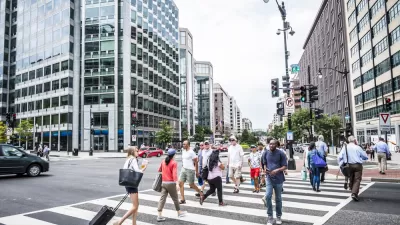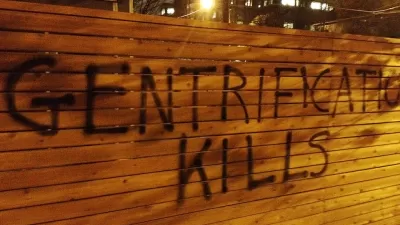A new study by the Federal Reserve Bank of Cleveland examines a “troubling consistency” of neighborhoods—that is that over the past 30 years, the poorest neighborhoods have stayed that way.
Emily Badger details a new study from the Federal Reserve Bank of Cleveland that identifies a trend of urban America: neighborhoods change very little over time with respect to the wealth or poverty of residents.
In summary: “Over the last 30 years, the poorest neighborhoods in urban America have largely remained that way. The depressing realities: Areas that had high unemployment and low average family incomes in 1980 are by and large the same places that had high unemployment and low average family incomes in 2008.”
The real value of the study, according to Badger’s analysis, are the examples provided by neighborhoods where residents did manage to raise their average incomes. “In thinking about how to change the fate of persistently poor neighborhoods, it's helpful to look more closely at what happened in the third of those neighborhoods that did see income growth over this time period.”
The finding of the study: “The areas that saw income growth, however, had significantly higher population density. And by 2008, their total population and density would grow even more.”
Badger acknowledges that “saying that poor neighborhoods in thriving cities fare better than poor neighborhoods in stagnant ones…seems fairly self-evident.” But an important implication emerges from that realization: “Your economic prospects as an individual are influenced by many factors outside of your control…”
The article also raises a final question, “the holy grail” of this direction of inquiry: “Within these previously poor neighborhoods, who is benefiting from the gains in income?”
FULL STORY: What we know about how poor neighborhoods become wealthier

Alabama: Trump Terminates Settlements for Black Communities Harmed By Raw Sewage
Trump deemed the landmark civil rights agreement “illegal DEI and environmental justice policy.”

Study: Maui’s Plan to Convert Vacation Rentals to Long-Term Housing Could Cause Nearly $1 Billion Economic Loss
The plan would reduce visitor accommodation by 25% resulting in 1,900 jobs lost.

Planetizen Federal Action Tracker
A weekly monitor of how Trump’s orders and actions are impacting planners and planning in America.

Waymo Gets Permission to Map SF’s Market Street
If allowed to operate on the traffic-restricted street, Waymo’s autonomous taxis would have a leg up over ride-hailing competitors — and counter the city’s efforts to grow bike and pedestrian on the thoroughfare.

Parklet Symposium Highlights the Success of Shared Spaces
Parklets got a boost during the Covid-19 pandemic, when the concept was translated to outdoor dining programs that offered restaurants a lifeline during the shutdown.

Federal Homelessness Agency Places Entire Staff on Leave
The U.S. Interagency Council on Homelessness is the only federal agency dedicated to preventing and ending homelessness.
Urban Design for Planners 1: Software Tools
This six-course series explores essential urban design concepts using open source software and equips planners with the tools they need to participate fully in the urban design process.
Planning for Universal Design
Learn the tools for implementing Universal Design in planning regulations.
Caltrans
Smith Gee Studio
Institute for Housing and Urban Development Studies (IHS)
City of Grandview
Harvard GSD Executive Education
Toledo-Lucas County Plan Commissions
Salt Lake City
NYU Wagner Graduate School of Public Service




























